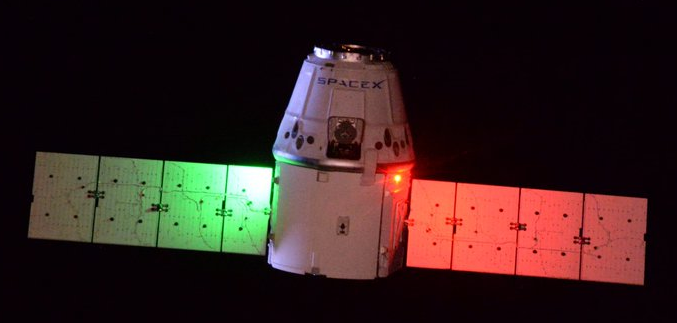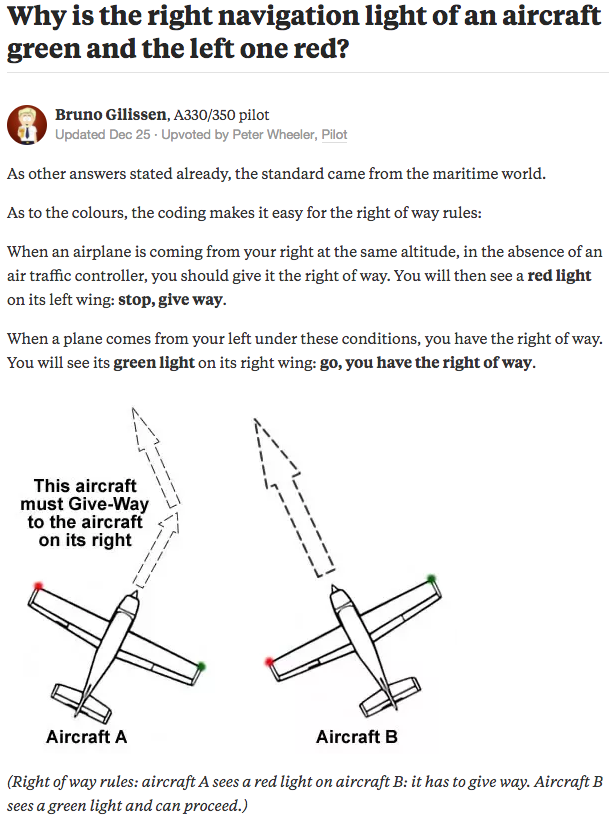update: Cropped screen capture from SpaceX Demo-1 Crew Dragon Docking to ISS - Part 2 after about 00:25:00 in the video:
I am curious if guidelines for the placement of red/green navigation lights on spacecraft been established. In maritime and most aviation situations, right/left have meaning because up/down does.
A highly related question would be:
Does this mean that the grapple fixture on Dragon is on the "bottom"? Is this the negative Z direction of this spacecraft's coordinate system?
above: From Spaceflight Now's SpaceX supply ship completes journey to space station (cropped). Caption: The Dragon spacecraft’s navigation lights illuminate the cargo ship during a nighttime orbital pass. Credit: Thomas Pesquet/ESA/NASA
For background on the use of red/green navigation lights in other craft:
above: from this answer to the Quora question Why is the right navigation light of an aircraft green and the left one red? There are multiple answers shown there.


